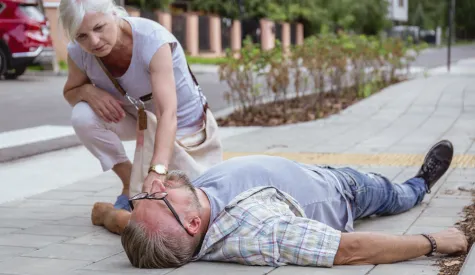Teaching CPR to Children

It’s never too early to learn lifesaving skills! Young children can learn and retain basic skills that may help save a loved one. Many Instructors are teaching CPR to children at schools, to youth organizations and to their own children. Below are a few tips to help you tailor your teaching style and delivery to match your young audience and begin shaping tomorrow’s young heroes.
There are many examples of children successfully performing CPR and other First Aid skills. Although children are capable of learning and retaining these important skills, Instructors should recognize that they have different motivations for learning and may have certain limitations.
When teaching CPR to children, depending on physical development, some children may not be able to perform adequate chest compressions for an adult victim. Others may not be able to give both compressions and breaths, and could be taught compression-only CPR. Encourage the child to do the best he can, and stay calm. Simply recognizing an emergency and calling 911 can save a life!
You can issue students a participation award for any skills they are not able to successfully perform. Participation awards are located in the Instructor Portal.
Set the class up for success
Set class expectations and boundaries at the beginning of class, when teaching CPR to children.
- Put cell phones away – This starts with you. Set the example and stay off your phone unless you are using it as a teaching tool. Have all students put their cell phones away to prevent distractions.
- Review classroom etiquette – Common classroom behavior includes being respectful of others, listening quietly while others speak and handling materials and equipment with care. Determine whether students should raise their hands or if you will allow open discussion.
- Discuss course schedule – Prepare students for what they will learn.
Modify your class schedule
Children often have a shorter attention span than adults. Plan for extra breaks. You can allow 10-minute breaks or give the students a “brain break” in the classroom. This can be a quick stretching session or dance party to lighten the mood.
Allow extra time for skills practice. Many students will not be familiar with a manikin and will require trial and error to learn the skills. You will likely spend more time demonstrating and providing positive feedback to help build their confidence.
Make it personal
Give students a reason to learn. Have any of them fallen and cut their knee? Broken a leg? Been stung by a bee? Choked on food? Gone camping, so they need to be able to take care of themselves? Use their own experiences to help them understand why it’s important to learn CPR and First Aid.
Don’t forget to make it fun for them too! Liven up class by getting on their level. There are a number of current songs that can be used to practice correct compression rate – like the popular song Baby Shark!
Repeat, repeat, repeat
Repeat the information in as many ways as you can throughout the course. Consider using additional teaching tools, such as a white board, to present information in different ways and keep bringing the children’s attention back to the topic. Remember, children learn differently, so you want to attempt to capture as many learning styles as possible.

Use a reward system
Bring rewards for students who participate, ask great questions or answer your questions correctly. A small budget goes a long way at any dollar store. Stock up on stickers, erasers, crazy straws and candy. Rewards keep students interested, and they can help win your students over. You can be the cool Instructor rather than just another adult they have to listen to.
Be patient
Children talk a lot, and their comments may or may not be on topic. Be patient. They are learning in their own way. It’s okay to laugh and joke with them, but continue to steer them back on topic.
Most importantly, have fun and know you are making a difference! You never know what critical piece of information will stick with them and affect how they will respond to an emergency in the future.


